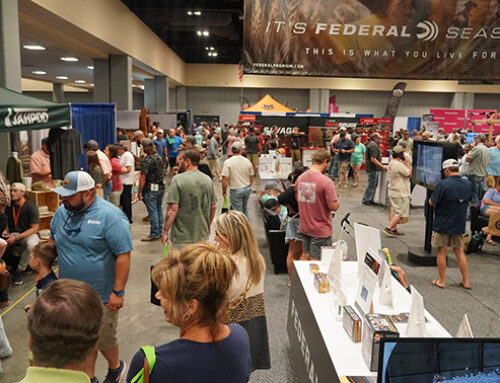U.S. Duck Hunter Numbers, Waterfowl Harvest Increased in 2016-2017

By Kyle Wintersteen
Which states harvested the most ducks, what species appeared most frequently on hunters’ straps and how many Americans went waterfowling during the 2016-2017 season? The U.S. Fish and Wildlife Service’s 2017 Migratory Bird Hunting Activity and Harvest report has the answers, and is full of intriguing statistics.
 U.S. Hunter Numbers Increase
U.S. Hunter Numbers Increase
The report includes an encouraging number for those who care about the future of duck hunting and waterfowl conservation: Active U.S. waterfowlers increased from a worrisome tally of 998,600 in the 2015-2016 season to 1.04 million last year.
This is welcome news, given that duck hunter numbers have been in steady decline. The 2015-2016 estimate is less than half of the 2.03 million waterfowlers that headed afield in 1970, and only the second time in the past 78 years that U.S. duck hunter numbers dipped below 1 million. The increase in 2016-2017 doesn’t mean the alarming trend has been reversed, but just maybe, waterfowl mentors and programs like Delta’s First Hunt have begun moving the needle. Let’s hope the increase holds in the seasons ahead.
Waterfowl Harvest Climbs
Last season’s U.S. duck harvest of 11.6 million is a slight increase over the nearly 11 million shot in 2015-2016. The goose harvest is also up, tallying 3.27 million compared to the 2.54 million birds bagged two seasons ago.
Mallards continue to be the most commonly harvested species, with 3.72 million taken last season. That’s more than double the second-most harvested species, green-winged teal at 1.58 million. Wood ducks typically rank third on the harvest list, but the 1.08 million bagged last year are surpassed by the gadwall harvest of 1.25 million. The blue-winged/cinnamon teal harvest (the species are impossible to distinguish during wing surveys) of 741,867 rounds out the Top 5.
The ring-necked duck harvest of 441,783 leads all divers, while buffleheads (198,855) and redheads (180,781) are second and third, respectively.
Flyway Totals
In the Atlantic Flyway, 227,300 waterfowlers bagged 1.6 million ducks and 754,000 geese. Pennsylvania’s 36,300 active waterfowlers edged Maryland and North Carolina for most hunters in the flyway. However, North Carolina’s duck harvest of 472,600 is the most in the East by a large margin. Tar Heel State hunters shot more than twice as many wood ducks (141,649) as their second most-harvested duck, mallards (60,296).
The Mississippi Flyway’s 434,200 waterfowlers shot 4.97 million ducks and 1.18 million geese, by far the largest harvest of any flyway. Minnesota had the most active waterfowlers, with 65,900. No state in the flyway shot more ducks than Arkansas, whose hunters took a whopping 1.14 million birds, including 620,654 mallards.
In the Central Flyway, 222,800 waterfowlers harvested 2.43 million ducks and 912,200 geese. Texas comprised nearly one third of the flyway’s active waterfowlers, with 83,900. Lone Star State waterfowlers shot 1.16 million ducks — roughly half the flyway total — including 264,767 blue-winged/cinnamon teal. North Dakota hunters harvested 437,300 ducks, the second highest of any state in the Central Flyway.
Heading west, 152,200 waterfowlers in the Pacific Flyway bagged 2.55 million ducks and 414,700 geese. California had more active waterfowlers (49,000) who harvested more ducks (1.15 million) than any western state. Green-winged teal were the most commonly bagged ducks in California, with a harvest of 381,869. Wigeon (159,177) and mallards (143,603) also contributed strongly to hunter success.






Hello, I was hoping someone could help me. Where can I find demographics for duck hunting and ages that duck hunt and the average that hunters spend on duck callers in the USA in the latest reports and where the information is gathered to study. I hope someone will be able to help me with this endeavor. Thank you for your time, I look forward to hearing from someone. Sincerely Mike. mjonesstunts@gmail.com
[…] enhancement in 2016-17 does not mean the disturbing trend has reversed, but just that waterfowl mentors & programs […]